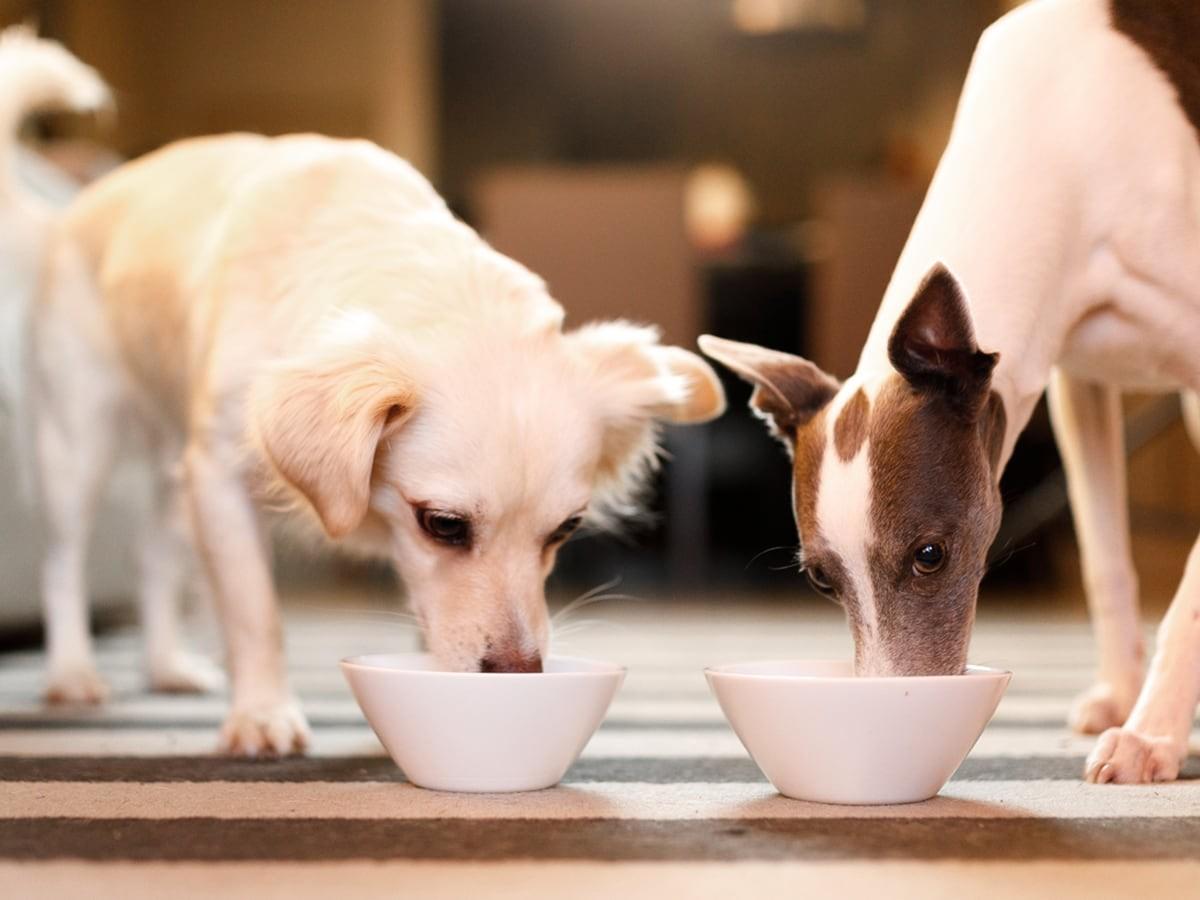When looking to give your dog the best things for its diet, there is any number of choices available. You should be seeking the foods that provide the most nutritional value to your dog and its growing needs. This begs the question, “ can dogs eat lobster?”
There are a few things to know not only about lobster but shellfish in general. Being better educated as to whether your dog can have lobster and similar shellfish will help you be as prepared as you can. Read on to find out more about lobster, the potential benefits it can offer, and the potential hazards it presents.
A Little Bit About Lobster
Humans know lobster as a delicacy. It is one of those meals that you order for a special night out, something delicious and actually quite healthy when compared to all the fried options that are on most menus.
As is the case with most of the things that you eat, it is not uncommon for your dog to gape at you while you enjoy it, which leads to the question of whether your dog can have lobster. Before you start giving him a few tasty bites, be sure about whether or not your dog can eat lobster first. This guide can be helpful as a reference for knowing whether lobster is as big a treat for them as it is for you.
The Upside of Lobster for Dogs
The short answer is that, yes, your dog can eat lobster. There are a lot of caveats to that answer, however, and it bears further digging. The good news is that, when properly prepared, there are several benefits to your dog.
With anything that you feed your dog, there should be some nutritional value to its content. Dogs require a lot of nutrients, vitamins, and energy to live their best lives. When you give them something that is high in fat or just empty calories, it can fly in the face of that need.
The great thing about lobster that has been properly cooked is that it can be a great source of protein. It also provides a good helping of iron, which is beneficial to ensure that your dog does not develop amenia, among other things.
Lobster has several omega-3 fatty acids, which are necessary for not only producing energy but great for reducing inflammation and decreasing the chance of illness in your pooch. That’s not even mentioning the zinc that is so beneficial to your dog and its joints.
Lobster is great for providing the essential minerals and vitamins that any dog needs. But, like any other kind of food, there are potential downsides to feeding your dog lobster.
The Negatives of Lobster
When you ask yourself whether your dog can have lobster, think about it like any other type of shellfish. The general rule with shellfish is that they must be prepared properly, and only small quantities are fine. When you make them a regular part of your dog’s diet, there are certain issues that can arise.
Among them, raw lobster can be potentially dangerous to their digestive tract. There is always the threat of allergies to be aware of, so be sure to keep an eye on your dog the first time that you give them any kind of shellfish.
Allergic Reaction
With any kind of food, not just lobster or even shellfish in general, there is always the risk of a potential allergic reaction. When you introduce new food to your dog, make sure to do so in small quantities and watch for any reactions.
Dogs can have food allergies just as people can. There are a few clear signs of allergic reactions in your dog. Hot spots or redness of the skin, diarrhea and vomiting, cramps, ear infections, and excessive scratching or licking can be clear signs.
Should your dog seem fine a few hours after you have given them the lobster, it is safe to assume that they are not allergic. Should they display any of the aforementioned signs, it is best to take them to the vet as soon as possible. Regardless of how they react, make sure that you don’t feed them large quantities (more on that later).
Raw Lobster
In general, you should avoid giving your dog raw seafood. This can be confusing to some as it can seem like your dog being able to have lobster means that it will be fine so long as there are no shells. But raw lobster can be just as dangerous to the health of your dog.
Raw shellfish have internal parasites and bacteria that can be dangerous to your dog’s digestion. It is not only possible for that bacteria to live in the digestion tract but to thrive as well. It can lead to serious discomfort or illness in your dog. In that case, do not hesitate to bring your dog to the vet.
The Shell
As is the case with any shellfish, the shell itself is one of the greatest dangers. When asking, “can my dog have lobster,” always assume that the answer excludes the shell. A lobster shell can be quite hard, even when cooked.
Chomping on the shell can have dangerous results. For starters, it is a natural choking hazard that can become lodged in their esophagus. That is not even mentioning how dangerous it is for their stomachs and intestines, with the potential to cause major damage to each. Never, ever, ever give your dog the shell of a lobster.
Other Dangers
Rounding out the list of dangers that lobster can present are some of the ingredients within. Lobster contains large amounts of sodium and iodine. Sodium, in particular, can lead to sodium ion poisoning and even kidney damage over time. The symptoms become obvious as they take the form of higher temperatures, tremors, diarrhea, vomiting, and even seizures.
There is also the matter of lobster being high in both fat and cholesterol. In small doses, lobster can be quite beneficial as an addition to their diet. When fed to them regularly, it can lead to elevated cholesterol levels in your dog. The higher fat content can lead to pancreatitis as well as obesity. When your dog becomes obese, there is any number of potential health issues that can arise over time. Keep the addition of lobster to an absolute minimum.
What Else Can Your Dog Eat?
Our furry friends are notorious for eating whatever they want, whenever they want. Unfortunately for them, they don’t know when they’re getting into something potentially dangerous, and sometimes neither do we. It helps to know which foods are toxic to our dogs so we can understand when they could be in trouble. Sometimes the treat we enjoy is just as beneficial to our dogs. Here are some healthy snack choices that you can securely and moderately incorporate into their diet.
Seafood Your Dog Can Eat
Dogs can safely consume seafood. If they eat shellfish like crab, their shells, legs, and tails should be removed to avoid the possibility of puncturing their internal organs. Dogs can also eat fin fish, like salmon, shrimp, and some tuna (in moderation) if their bones are removed for the same reason. Your dog might benefit from staying away from canned tuna if it comes in a package filled with salt water or contains any extra salt. Likewise, seafood given to dogs should not be seasoned at all.
Seafood can have bacteria and other toxic elements in it when they’re undercooked. Because of this, seafood should always be thoroughly cleaned and cooked before it’s offered to your dog.
Fruits Your Dog Can Eat
Several fruits are healthy favorites for dogs and provide a nutritional treat and supplement in their diet. For example, dogs love bananas. Bananas are a great source of potassium and vitamins. Dogs can have many kinds of melons, like watermelon, plus kiwis, oranges, apples (without the core, seeds, or stems), pineapples, and mangos. Fruits that are packed with antioxidants like blueberries, strawberries, and raspberries are very healthy for dogs when they’re offered in chunks and thoroughly cleaned.
Grapes, raisins, and sultanas are poisonous to your dog and shouldn’t be eaten at all. Cherries and other fruits with pits, like peaches, plums, and the like, are not considered safe either. The flesh of the fruits is safe to eat, but pits are hazards and poisonous. You should always take the pits out of fruits before giving them to them. Here is a full list of fruits your dog can eat.
Vegetables Your Dog Can Eat
Eating onions, leeks, and garlic could be lethal for your dog. Seasonings that contain these ingredients could be just as deadly, which is why it’s a good idea to avoid them. There are some other veggies that you can feed your dog during safe snack time. Dogs can have carrots, spinach, green beans, and pumpkin safely. Furthermore, they can eat kale, broccoli, and brussels sprouts, and they are all completely safe and actually very healthy for them. Sometimes too many veggies can cause gas, so pay attention to how much vegetables can dogs eat in one sitting.
Beans Your Dog Can Eat
Beans are packed with important nutrients for a dog’s diet. Dogs can have lima beans, black beans, garbanzo, pinto, kidney, soy, and butter beans, too. Feeding your dog too many beans could cause them to have gas. To avoid an upset stomach, only give them beans in moderation.
Nuts Your Dog Can Eat
Some nuts should be completely avoided, like macadamia nuts and walnuts. These are very poisonous to dogs. Fiber and potassium may be the only nutritional benefits of nuts, and there are many other safer ways for dogs to receive these nutrients. However, If they’re begging for a treat, they can eat pistachios and peanuts in moderation without posing a threat. Nuts should never be seasoned or shelled. Here is a full list of all the dry fruits your dog can eat.
Final Thoughts
What different seafood can your dog eat? There are plenty of other suitable seafood options to implement into your pup’s diet. Properly cooked crabs and shrimp, canned tuna, salmon, and even seaweed can all make for great choices.
As is the case with anything, it is important to know whether your dog can have it. In the case of lobster, it should be treated as any other shellfish. When properly prepared, it can provide any number of benefits to your dog. So long as it has been cooked and is given in smaller portions, your dog will be thankful to have lobster in its diet.

Mostly a tech person, always a pet person. I am dedicated to improving the lives of pets and their humans with technology. Off-duty, I enjoy writing about the misbehaving of computer programs and my two Aussiedoodles, Calvin and Hobbes.
*Jan 2019 to Aug 2024 Spot Pet Insurance Services, LLC claims data.
Tucker, Jessica. "Is Lobster Safe for Dogs, Or a Risky Seafood Gamble?" AZ Animals, 05 Sep. 2025, https://a-z-animals.com/articles/is-lobster-safe-for-dogs-or-a-risky-seafood-gamble/.
Pattemore, Chantelle. "Can Dogs Eat Fish?" The Dog People by Rover, 19 Feb. 2024, https://www.rover.com/blog/can-dogs-eat-fish/.
AKC Staff. "Fruits and Vegetables Dogs Can or Can't Eat." American Kennel Club, 15 Oct. 2025, https://www.akc.org/expert-advice/nutrition/fruits-vegetables-dogs-can-and-cant-eat/.
The information presented in this article is for educational and informational purposes only and does not constitute or substitute for the advice of your veterinarian.












